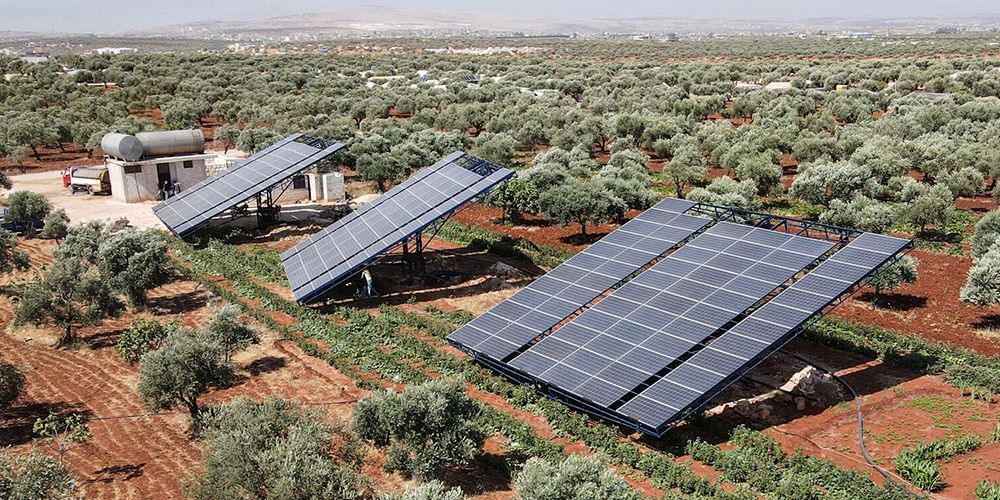Search

Publications
Promising gas and energy projects of Azerbaijan for the European Union: LNG and «green generation»

Starting from spring of 2022, Azerbaijan and the Caspian Region quite naturally were in the focus of the European energy agenda. Several important initiatives were declared at the top level, and part of them may start in the mid-term perspective already.
The most interesting of them are:
- laying the underwater cable in the Black Sea for electricity and digital communications between Georgia and Romania (throughput capacity 1,000 MW, length 1,195 km). The plan is to complete the project feasibility study by the end of 2023;
- building LNG terminals on the Black Sea. This project is named as a priority in the cooperation MOU between the Romanian Romgaz and Azerbaijanian SOCAR.
«Green hydrogen»
«Green hydrogen» production is another project. The options under consideration are either building the respective plant in Azerbaijan based on renewable energy sources (RES), or in one of the EU countries receiving gas from Azerbaijan. The feasibility study of this project is included into the list of objectives in the Social and Economic Development Strategy for 2022-2026.
The preliminary consultations are already underway. In September, the Ministry of Energy of Azerbaijan held a meeting with the Japanese Toyota Tsusho Corporation to exchange opinions of this project parameters.
In early November, in the course of the second session of the RES Commission chaired by the head of the Ministry of Energy of Azerbaijan, аthe Australian Fortescue Future Industries presented its proposals for the «green hydrogen» production and export.
On top of that, it should be taken into account that Azerbaijan may become a transit country for exporting hydrogen from Kazakhstan. In late October, the Swedish Svevind Energy Group signed an MOU with the Government of Kazakhstan for building the «green hydrogen» plant, and the budget for three phases with total capacity of 20 GW may achieve USD 50 bn.
Thus, the worldТs largest plant of such industry capable of covering one-fifth of the European needs may appear in the Caspian Region by the end of 2020s.
WANTED: investment
It should be clarified from the very beginning: not all of the discussed projects may be implemented within the desired deadlines. In addition to serious political and geo-political factors, the issue of CAPEX into the production and export infrastructure to bring additional hydrogen volumes from the region to external markets remains open.
In particular, Baku and Ashkhabad did not change their position with respect to the Trans-Caspian gas pipeline outlook: it will not be built at the expense of investment coming solely from Azerbaijan and Turkmenistan. Despite the active discussions over the recent years, the consortium for funding this project has not been established so far.
It is interesting that Fitch estimates the SOCARТs CAPEX for 2022-2025 as AZN 16 bn (USD 9.4 bn as per the current FOREX rate), this money will be mainly channeled to increasing the production and export under the current projects. In addition, under the Baku commitments within the Strategic Partnership in Energy Sphere MOU with the EU, the gas supplies to the European Union will be increased up to 20 bcm by the end of 2020s.
At the same time, according to SOCAR estimates, the total investment into gas projects may require up to USD 14 bn during the same period.
LNG export to the European Union
The MOU between the Romanian Romgaz and SOCAR diversifying the profile of gas export from Azerbaijan, may be called sensational to a certain extent. The construction of an LNG terminal (probably, in Georgia) will expand the geography of exporting Azerbaijanian and Caspian gas to the global markets.
Not many details of this project are known so far, so we will highlight only the main ones. In the course of the visit of Azerbaijanian delegation to Bucharest in the middle of October 2022 joint project of the LPG terminal on the Black Sea was declared. Romgaz and SOCAR agreed to perform the project feasibility study including the natural gas liquefication plant, re-gasification plant (not far from Constanta) and other facilities required to transport gas from the Caspian Sea.
Prior to that announcement, Nicolae Ciuca, the Prime-Minister of Romania, discussed the contours of this project with President Ilham Aliyev within the framework of the official visit by the President of Azerbaijan, when the issues of energy cooperation between the two countries and the main vectors of partnership were discussed.
According to the Romanian Premier, the feasibility study has commenced already with participation of international consultants. Both parties are co-funding the design work, so the deliverables are expected soon.
The head of Romanian government especially noted: «We need this gas and the capacities as soon as possible. Eventually we hope to have two terminals Ц on the Eastern coast and on the Western coast of the Black Sea Ц so we could diversify and supplement the corridors for supplying gas from the Caspian basin to Europe».
Romania intends to perform a double role in this case: to become a new European hub for importing energy resources, and to support its national economy.
And all this is not about just gas. In March 2022, Parviz Shahbazov, the Energy Minister of Azerbaijan, discussed the idea proposed by Ilham Aliyev with the Romanian delegation: laying the submerged electricity cable from Azerbaijan (via Georgia) to Romania in the Black Sea alongside the already operational fiberoptics cable.
The construction of the ,500-km electricity transmission line with significant portion of it to be laid as the sub-sea cable is undoubtedly a very complicated and expensive project. So far, there are no numbers of the potential costs. But considering the fact that Baku plans to supply «green» energy it intends to generate at the new wind and solar power plants, this project will definitely receive support of the major donor organizations. The World BankТs approval is already in place.
According to analysts, the European electricity prices have already doubled and by the end of 2022 they may grow 50% more maintain their peak values until 2024. That is why AzerEnergy plans to continue and expand its swap electricity supplies to Greece, Romania, Bulgaria and Hungary (they started in the trial mode back in 2019). With account that the wind, solar and hydro- energy potential in Karabakh and East Zangezur exceeds 10 GW, the resource for «green» energy export is sufficient, and such export will not cause any harm to the national energy grid.
And now we can see a new step forward associated with liquified natural gas.
Romania values the future interaction with Azerbaijan and strives for implementing both projects to strengthen its positions in the EU as the dealer for the Caspian energy resources. Despite the lengthy cycle of investment and payback, the LNG project and cable laying may be very promising for both Bucharest and Baku.
Another thing is that one question remains closed for the public: what will be the size of the Black Sea LNG terminal for gas coming from Azerbaijan?
Let us remind here, that the export of Azerbaijanian gas to Europe in 2022 is forecasted at the level of 11.5 bcm, and by 2027 it is expected to grow up to 20 bcm, i.e., will actually double. These volumes are already contracted via “ј– by Italy, Greece and Bulgaria. Montenegro and Serbia are also queuing for receiving their volumes using this gas pipeline. Romania could also get its small portion.
If we are talking about the LNG terminal, its payback is faster depending on its capacity. In other words, LNG construction with small and medium annual volumes in mind may turn out to be more expensive vs. the big-size one. But the bigger project will require increase of production in Azerbaijan above the volumes already planned for the five-year horizon. So, the option of celling excessive gas received from partners at this terminal may also be considered as a solution for this task.
The Black Sea hub instead of the Baltic hub
Interesting enough, the joint project of Azerbaijan and Romania was presented just a few days after Recep Tayyip Erdogan announced his support of Vladimir PutinТs proposal to re-direct Russian gas flows from the Baltics to the Black Sea.
In order to re-direct the like-for-like volumes from Nord Stream 1 and Yamal Ц Europe pipeline to the South of the European Union, new pipelines need to be built from Turkey to major hubs in Austria. It is still unknown, who will be performing this work and how much it will cost in the sanctionsТ environment.
That is why a major LNG terminal may appear in the Russian-Turkish gas hub project. And probably Ц not just one, especially if Turkey will be receiving the double volume of gas: from Russia, Azerbaijan, part of Iran and Turkmenistan swap of the same gas from the RF (Russian-Iranian agreements of August 2022).
At the same time, the Turkish political class and business circles will have to face the strong pressure of the United States. In mid-October 2022, Elizabeth Rosenberg, the Assistant Secretary of the US Treasury, arrived to Ankara as the head of the American delegation to discuss «the compliance by Turkey with the anti-Russian sanctions». The delegation met with the head of the Turkish Central Bank, the Ministry of Finance officials and business groups representatives in Ankara and Istanbul.
But it looks like Erdogan has already passed the «pressure crossroads» and is ready to ignore potential vulnerabilities in the context of the new geo-political setting, where Turkey will be playing the growing role both in the East as the Turkic world integrator, and in the West assuming the function that Germany used to be performing Ц the chief administrator of the Russian gas in the EU. And there is an additional role for Turkey Ц the major infrastructure hub Ц subject to combining three mega-projects: an aviation hub in Istanbul, the Istanbul canal duplicating the Bosporus, and gas terminals for global export.
The «Caspian Five» resources are becoming the key element in this geo-political game.







